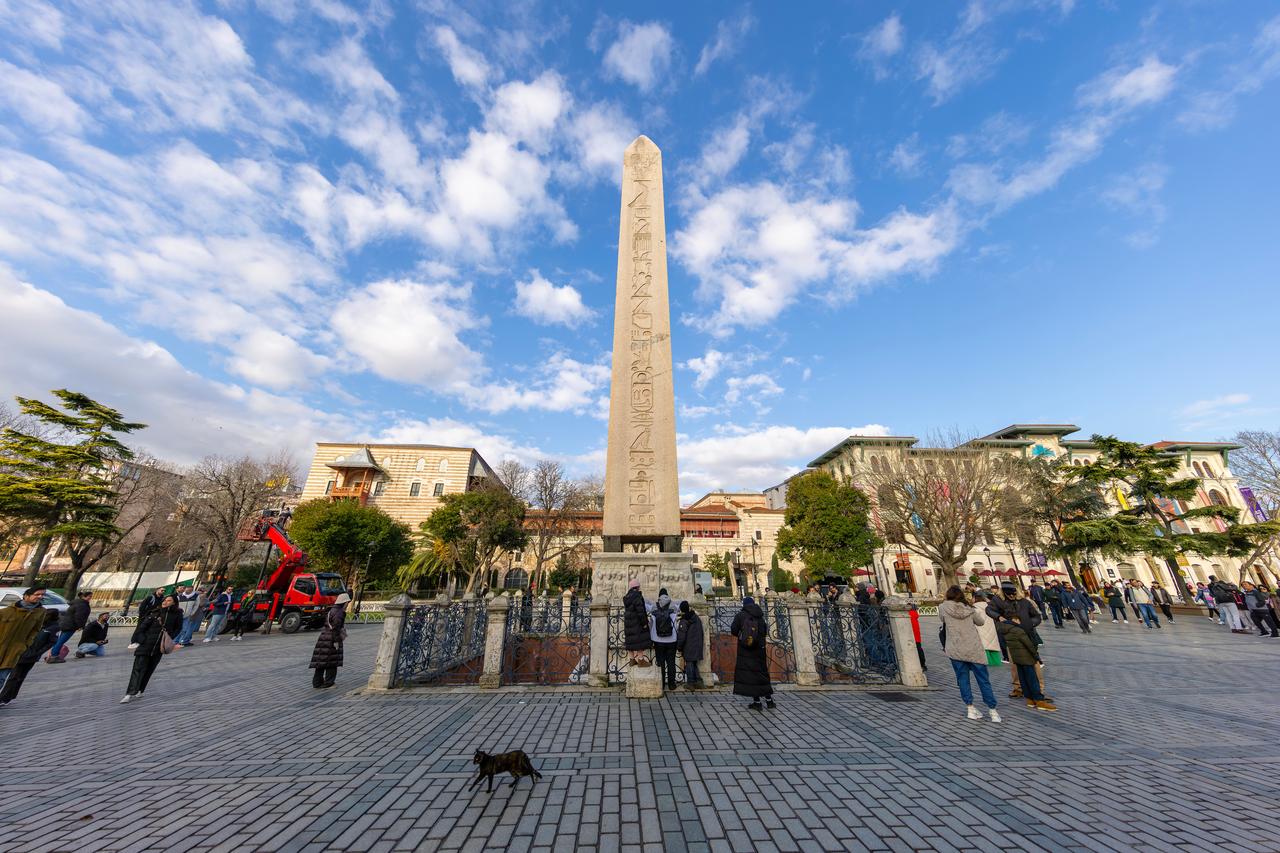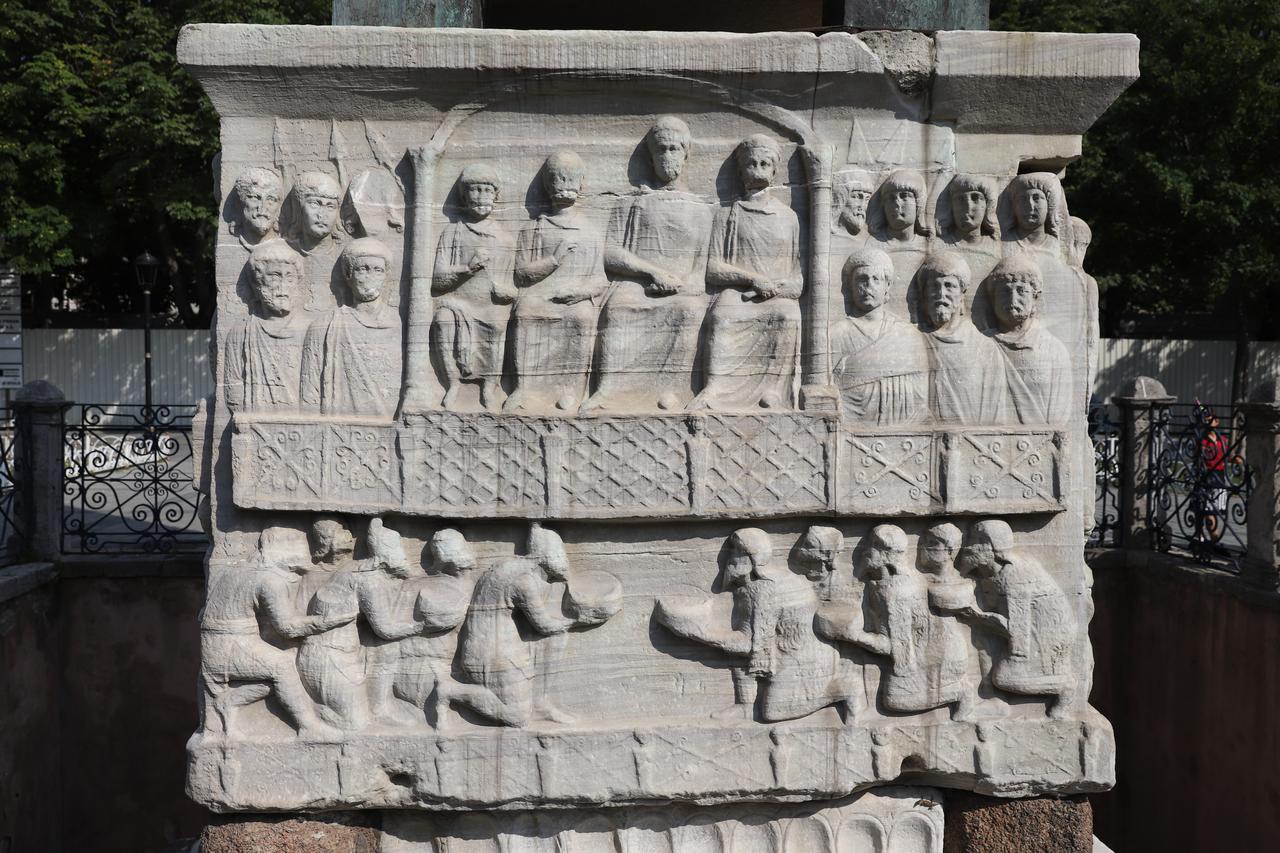
Rising proudly in the center of Istanbul’s Sultanahmet Square, the Obelisk of Theodosius stands as a silent witness to the grandeur of two ancient empires. Carved in Egypt and erected in the heart of what was once Constantinople, this monument is a powerful reminder of the enduring legacy of power, conquest, and cultural exchange.
Originally commissioned by Pharaoh Thutmose III in the 15th century B.C., the obelisk was created to commemorate his victorious military campaigns in Mesopotamia. Hewn from rare red granite in the quarries of Aswan, where most of Egypt’s great obelisks were born, the monument once stood at the entrance of the seventh pylon at Karnak Temple in Luxor, a site sacred to the god Amun-Ra.
Wrapped in intricate hieroglyphics, it originally reached a height of nearly 30 meters. However, it was damaged during its transportation from Egypt, reducing its current height to 18.45 meters (16.5 feet).
Egyptologist Abdel Rahim Rihan confirmed that this significant obelisk features clearly visible hieroglyphic inscriptions on all four sides.
The carvings begin with the name of Pharaoh Thutmose III and recount his victories in the Battle of the Euphrates in Syria. The inscriptions also depict the god Amun presenting the ankh, the ancient Egyptian symbol of life, to the pharaoh. In return, Thutmose III is shown offering sacrifices to Amun, emphasizing both his divine legitimacy and devotion.

More than a thousand years after its creation, the obelisk was transported to Constantinople in the year 390 A.D. on the orders of Emperor Theodosius I. Erected in the Hippodrome of Constantinople, today’s Sultanahmet Square, the feat was considered a remarkable engineering accomplishment of the late Roman Empire.
The obelisk rests on a marble pedestal etched with vivid reliefs, not only of the emperor and his court supervising its installation but also of moments from public life, including the emperor watching horse races and wrestling matches alongside his family and soldiers.
Despite centuries of earthquakes and political turmoil, the monument has remained firmly rooted in its place, an unshaken witness to history.
Surrounded by legends, from miraculous tales of its transportation to beliefs in its mystical powers, the Obelisk of Theodosius is more than a remnant of the past. It is a striking emblem of imperial ambition, cultural fusion, and enduring artistry.
Rising from the sands of ancient Egypt to the heart of Istanbul, it stands as a timeless bridge between civilizations, echoing the grandeur of both pharaohs and emperors.